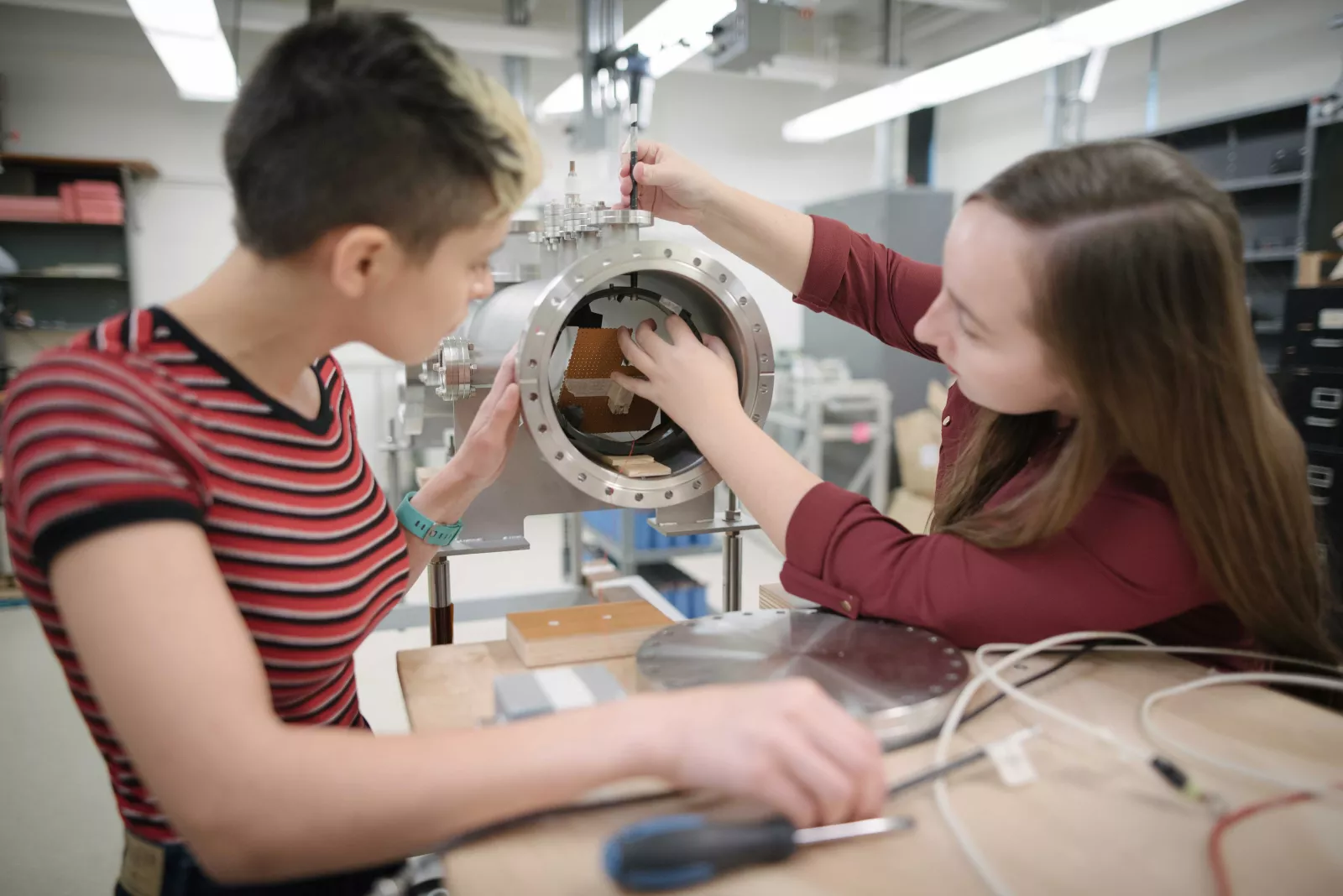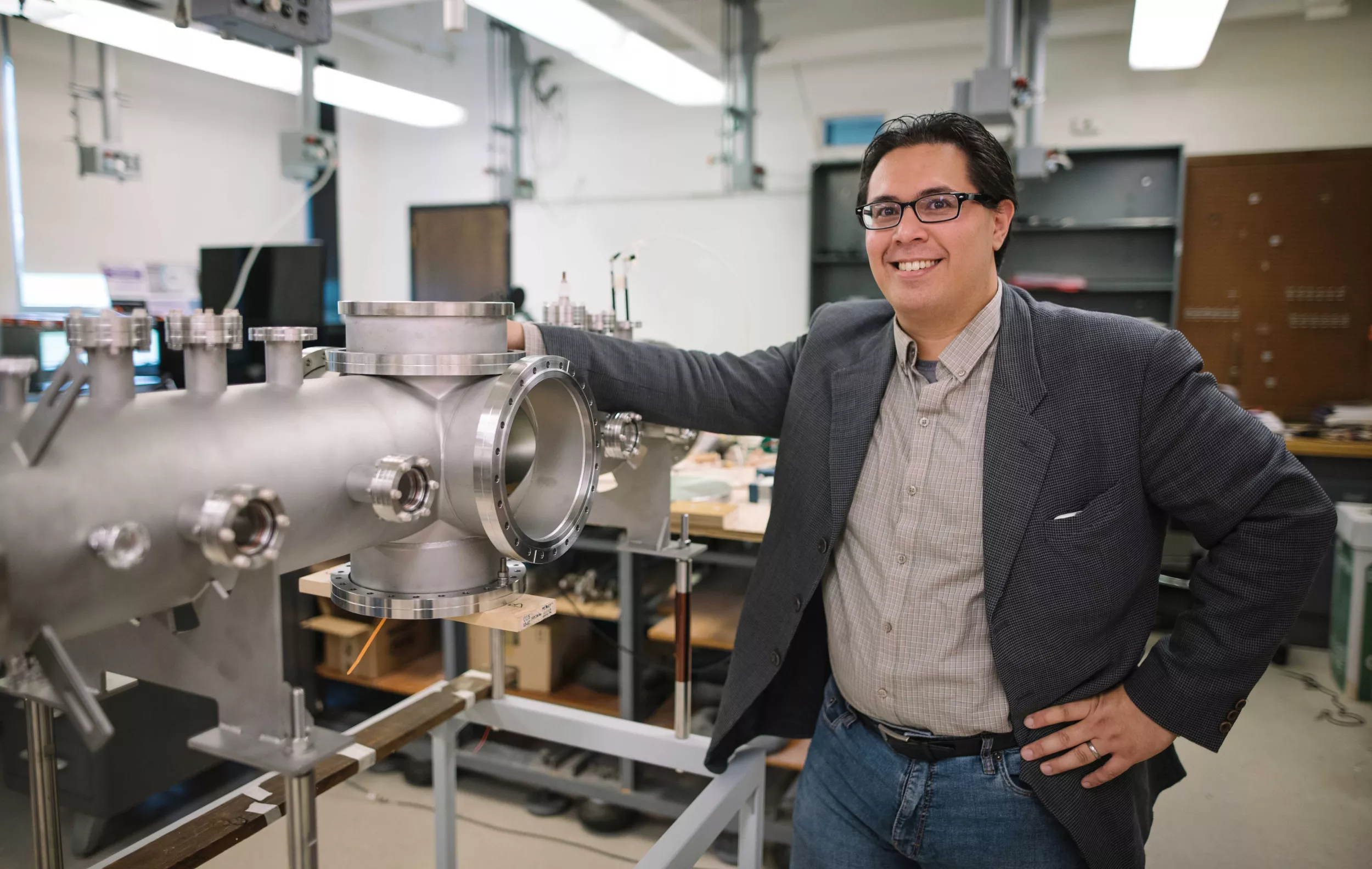Assistant Professor of Physics David Schaffner and three Bryn Mawr students are part of a joint Bryn Mawr/Swarthmore College team of researchers hoping to find lower cost solutions to what has thus far been a very high-cost enterprise – nuclear fusion.
The Bryn Mawr students working with Schaffner on the project are Hayley Johnson '18, Codie Fiedler-Kawaguchi '18, and Emmeline Douglas-Mann '18.
Working primarily in the lab of Swarthmore Professor and Department Chair of Physics and Astronomy Mike Brown, the researchers are attempting to create a self-contained plasma bubble —called a spheromak—containing hydrogen isotopes which would then be pushed through a chamber using a fast pulse of current through a copper ring (think a watermelon seed being squished between your fingers).
As Schaffner explains, nuclear fusion is so difficult because, to achieve it, you have to get very small particles to collide.
“If fission is shooting an oil tanker with a sniper bullet, fusion is having two snipers facing each other a mile apart and having them fire and hoping the rounds hit each other,” says Schaffner.
By using plasma, the researchers hope to confine the hydrogen particles and allow for multiple possible collisions. The work the researchers are doing would be one part of a much larger system but that system would still be much smaller and less costly than the multibillion dollar projects that have thus far led fusion research.
“Researchers have done fusion, we’ve seen fusion reactions. Thermonuclear bombs are a type of uncontrolled fusion. We’ve seen fusion in plasma,” says Schaffner. “The question now is can we make fusion practical. We’re at a stage where we can make fusion reactions but we can’t do it consistently in a way where we get more energy out than we get in. It’s like lighting a candle with a flame thrower. You can do it but you’re not really gaining anything.”
The $550,000 three-year project is being funded by the U.S. Department of Energy’s ALPHA (Accelerating Low-Cost Plasma Heating and Assembly) program. The aim of the $30 million program is to create innovations that will open the field of fusion research to a broader range of approaches by a variety of institutions, both public and private, facilitating more rapid progress toward economical fusion power
Schaffner, who is designing and building a new plasma facility at Bryn Mawr, became involved in the project while he was a postdoctoral research fellow at Swarthmore.
Scheduled to be completed in about a year, Schaffner’s lab will also be centered around plasma research. However Schaffner’s focus will be on turbulence in plasma. Ph.D. candidate Carlos Cartagena has been working closely with Schaffner in setting up the lab.
“With plasma you’re trying to create as stable of a confinement area as possible but there is a lot of energy involved and there are a lot fluctuations involved. This is important to the fusion work we’re doing but I’m going to be looking at turbulence in plasma even more broadly,” says Schaffner.

